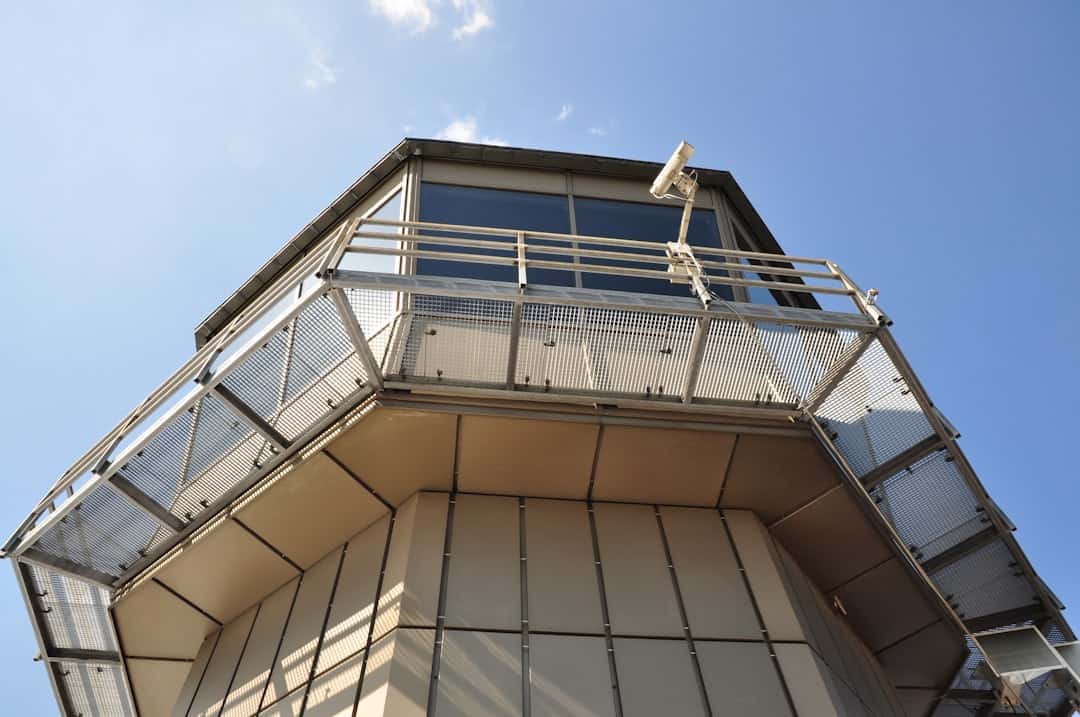The Cybersecurity and Infrastructure Security Agency (CISA) and the Department of Homeland Security (DHS) collaborate to enhance national Cybersecurity and protect critical infrastructure. CISA serves as the nation’s risk advisor, working with partners to defend against current threats and build more secure and resilient infrastructure for the future. DHS is responsible for safeguarding the American people, homeland, and values.
The partnership between CISA and DHS is crucial in addressing evolving cyber threats and ensuring the security and resilience of the nation’s critical infrastructure. The collaboration between CISA and DHS is essential in tackling the growing cyber threats facing the nation. As reliance on digital technologies and interconnected systems increases, the potential for cyber attacks on critical infrastructure has become a significant concern.
The partnership allows for a coordinated and comprehensive approach to cybersecurity, leveraging the expertise and resources of both agencies to strengthen the nation’s cyber defenses. This collaboration is vital in addressing the complex and evolving nature of cyber threats, ensuring that critical infrastructure remains secure and resilient in the face of emerging challenges.
Key Takeaways
- CISA and DHS collaborate to enhance cybersecurity and protect critical infrastructure.
- Strengthening cybersecurity is crucial in the face of increasing cyber threats and attacks.
- CISA and DHS work together on joint efforts and initiatives to address cybersecurity challenges.
- Public-private partnerships play a significant role in strengthening cybersecurity and protecting critical infrastructure.
- Collaboration between CISA and DHS has a significant impact on the protection of critical infrastructure and national security.
The Importance of Strengthening Cybersecurity
Strengthening cybersecurity is of paramount importance in today’s digital age, where cyber threats pose a significant risk to national security, economic stability, and public safety. Cyber attacks can target critical infrastructure, such as energy, transportation, and healthcare systems, disrupting essential services and causing widespread disruption. The increasing interconnectedness of digital systems also means that cyber attacks can have far-reaching consequences, impacting not only individual organizations but also entire sectors and the broader economy.
As such, strengthening cybersecurity is essential in safeguarding the nation’s critical infrastructure and ensuring the continuity of essential services. Furthermore, the growing sophistication and frequency of cyber attacks underscore the need for enhanced cybersecurity measures. Cyber adversaries are constantly evolving their tactics and techniques, making it essential for organizations to continually improve their cybersecurity defenses.
Strengthening cybersecurity is not only about preventing attacks but also about being able to detect, respond to, and recover from incidents effectively. By bolstering cybersecurity measures, organizations can better protect their systems and data, mitigate the impact of cyber attacks, and ensure business continuity. Ultimately, strengthening cybersecurity is crucial in safeguarding national security, protecting critical infrastructure, and preserving public trust in digital technologies.
Joint Efforts and Initiatives by CISA and DHS

CISA and DHS have undertaken various joint efforts and initiatives to enhance cybersecurity and protect critical infrastructure. One such initiative is the National Cybersecurity and Communications Integration Center (NCCIC), which serves as a central hub for coordinating cyber defense efforts across the federal government, private sector, and international partners. The NCCIC provides a range of services, including incident response, analysis, information sharing, and coordination of cyber exercises and training.
Through the NCCIC, CISA and DHS work together to strengthen the nation’s cyber defenses and respond to emerging cyber threats. Additionally, CISA and DHS collaborate on various cybersecurity programs and initiatives aimed at enhancing the resilience of critical infrastructure. This includes providing guidance and resources to help organizations improve their cybersecurity posture, conducting risk assessments and vulnerability assessments, and developing best practices for securing critical infrastructure.
By working together, CISA and DHS are able to leverage their respective expertise and resources to address cybersecurity challenges comprehensively. These joint efforts and initiatives are essential in building a more secure and resilient cyber ecosystem, protecting critical infrastructure from cyber threats, and ensuring the continuity of essential services.
The Role of Public-Private Partnerships in Cybersecurity
| Metrics | Data |
|---|---|
| Number of Public-Private Partnerships | Increasing over the years |
| Investment in Cybersecurity PPPs | Growing steadily |
| Effectiveness of PPPs in Cybersecurity | Varies based on implementation |
| Number of Cybersecurity Incidents | Decreasing with PPP involvement |
Public-private partnerships play a crucial role in cybersecurity, bringing together government agencies, private sector organizations, and other stakeholders to collaborate on addressing cyber threats. CISA and DHS have been actively engaging with private sector partners to enhance cybersecurity through information sharing, collaboration on best practices, and joint initiatives. By working together, public and private sector organizations can leverage their respective strengths and resources to address cybersecurity challenges more effectively.
Furthermore, public-private partnerships are essential in addressing the complex nature of cyber threats, which often transcend organizational boundaries. Cyber attacks can target multiple organizations within a sector or industry, making it essential for public and private sector entities to collaborate on a coordinated response. Through public-private partnerships, organizations can share threat intelligence, coordinate incident response efforts, and develop joint strategies for enhancing cybersecurity.
This collaborative approach is vital in addressing the evolving nature of cyber threats and ensuring that critical infrastructure remains secure and resilient.
Impact on Critical Infrastructure Protection
The collaboration between CISA and DHS has had a significant impact on critical infrastructure protection, enhancing the resilience of essential services against cyber threats. By working together, CISA and DHS have been able to provide guidance, resources, and support to critical infrastructure owners and operators to improve their cybersecurity posture. This includes conducting risk assessments, developing best practices for securing critical infrastructure, and providing training and exercises to enhance preparedness for cyber incidents.
Furthermore, the joint efforts of CISA and DHS have led to improved information sharing and coordination across sectors, enabling a more comprehensive approach to protecting critical infrastructure from cyber threats. By leveraging their respective expertise and resources, CISA and DHS have been able to address cybersecurity challenges holistically, ensuring that critical infrastructure remains secure and resilient in the face of emerging threats. The impact of this collaboration is evident in the enhanced cybersecurity posture of critical infrastructure sectors, better preparedness for cyber incidents, and improved coordination in responding to cyber threats.
Future Plans and Strategies for Cybersecurity Enhancement

Looking ahead, CISA and DHS have outlined several future plans and strategies for enhancing cybersecurity and protecting critical infrastructure. This includes continued collaboration with public and private sector partners to strengthen information sharing, develop best practices for cybersecurity, and enhance incident response capabilities. Additionally, CISA and DHS are focused on advancing cybersecurity technologies and capabilities to address emerging threats effectively.
Furthermore, CISA and DHS are working on expanding their outreach efforts to engage with a broader range of stakeholders, including state and local governments, international partners, and academia. By fostering greater collaboration across sectors and jurisdictions, CISA and DHS aim to build a more resilient cyber ecosystem that can effectively respond to cyber threats. Additionally, CISA and DHS are focused on enhancing public awareness of cybersecurity risks and promoting best practices for securing digital systems.
The Way Forward for CISA and DHS Collaboration
In conclusion, the collaboration between CISA and DHS is essential in addressing the evolving cyber threats facing the nation and protecting critical infrastructure from cyber attacks. By working together, CISA and DHS are able to leverage their respective expertise and resources to enhance the nation’s cyber defenses comprehensively. Through joint efforts and initiatives, public-private partnerships, and outreach efforts, CISA and DHS are making significant strides in strengthening cybersecurity and protecting critical infrastructure.
Looking ahead, CISA and DHS are committed to advancing their collaboration with public and private sector partners to address emerging cyber threats effectively. By focusing on information sharing, best practices development, incident response capabilities enhancement, outreach efforts expansion, technology advancement, public awareness promotion, CISA and DHS aim to build a more resilient cyber ecosystem that can effectively respond to cyber threats. The way forward for CISA and DHS collaboration involves continued dedication to enhancing cybersecurity measures, protecting critical infrastructure from cyber threats, and ensuring the security and resilience of the nation’s digital systems.
The significance and impact of the metaverse on cybersecurity is a topic of growing concern for organizations and government agencies, including the Department of Homeland Security’s Cybersecurity and Infrastructure Security Agency (CISA). As the metaverse continues to evolve and expand, the real-world challenges of securing this hybrid reality are becoming more apparent. To stay ahead of emerging threats and innovations in the metaverse, CISA and other cybersecurity experts are closely monitoring future trends and technologies shaping this virtual world. For more information on the impact of the metaverse, check out this related article.
FAQs
What is CISA DHS?
CISA stands for Cybersecurity and Infrastructure Security Agency, which is a federal agency within the Department of Homeland Security (DHS). CISA is responsible for protecting the nation’s critical infrastructure from cyber threats.
What is the role of CISA DHS?
CISA DHS is responsible for coordinating the protection of critical infrastructure and key resources, including the nation’s cyber and physical infrastructure. It works to enhance the security and resilience of the nation’s critical infrastructure against cyber and physical threats.
What are the main functions of CISA DHS?
CISA DHS is responsible for providing cybersecurity and infrastructure security guidance, sharing information and intelligence, conducting risk assessments, and coordinating incident response efforts. It also works with public and private sector partners to enhance the security and resilience of critical infrastructure.
How does CISA DHS work with other government agencies?
CISA DHS collaborates with other government agencies, including federal, state, local, tribal, and territorial governments, as well as private sector partners, to enhance the security and resilience of the nation’s critical infrastructure. It also works closely with law enforcement and intelligence agencies to address cyber and physical threats.
What is the significance of CISA DHS in national security?
CISA DHS plays a critical role in protecting the nation’s critical infrastructure from cyber and physical threats, which are essential to national security and public safety. Its efforts help to ensure the security and resilience of the nation’s infrastructure, including systems and assets that are vital to the economy, public health, and safety.











Leave a Reply